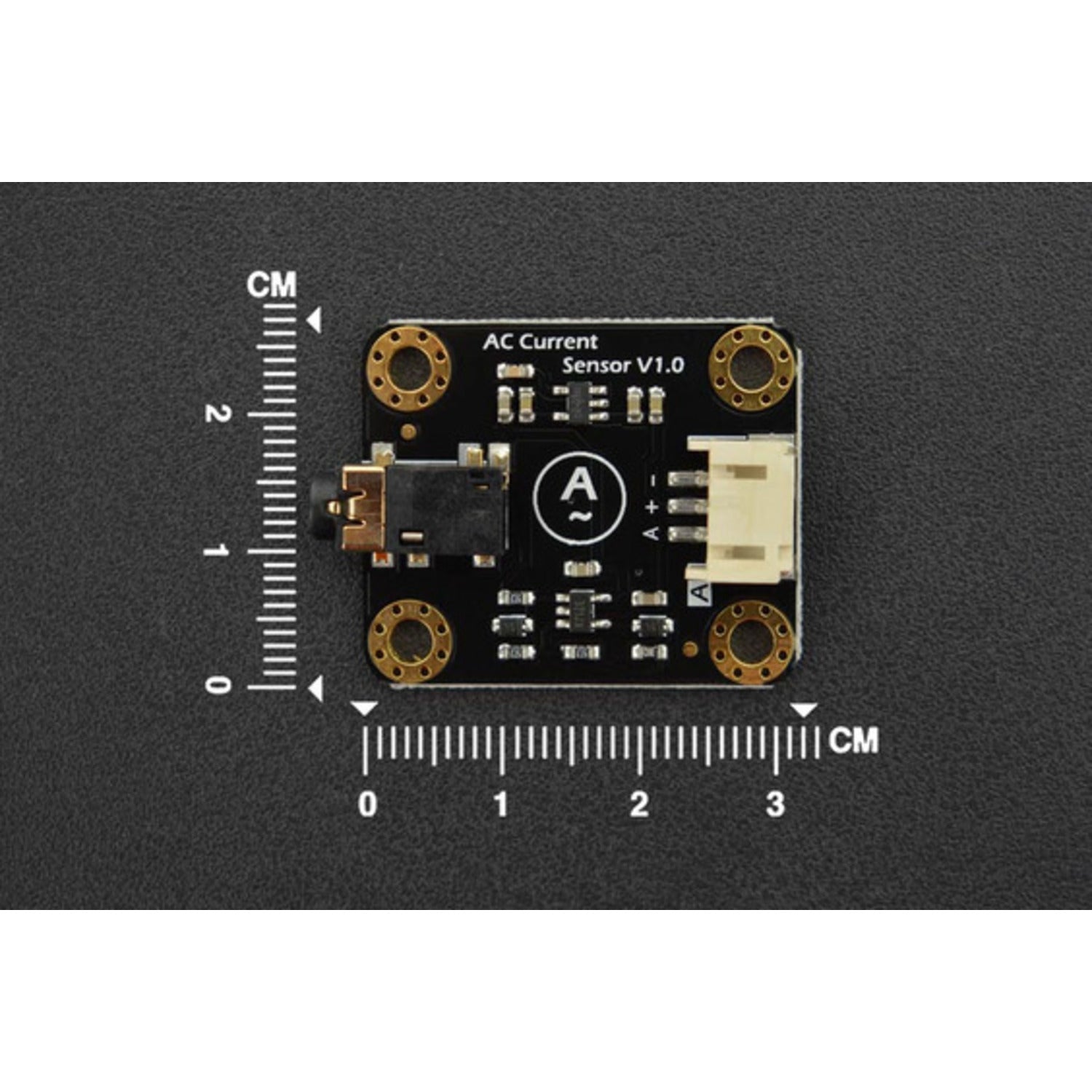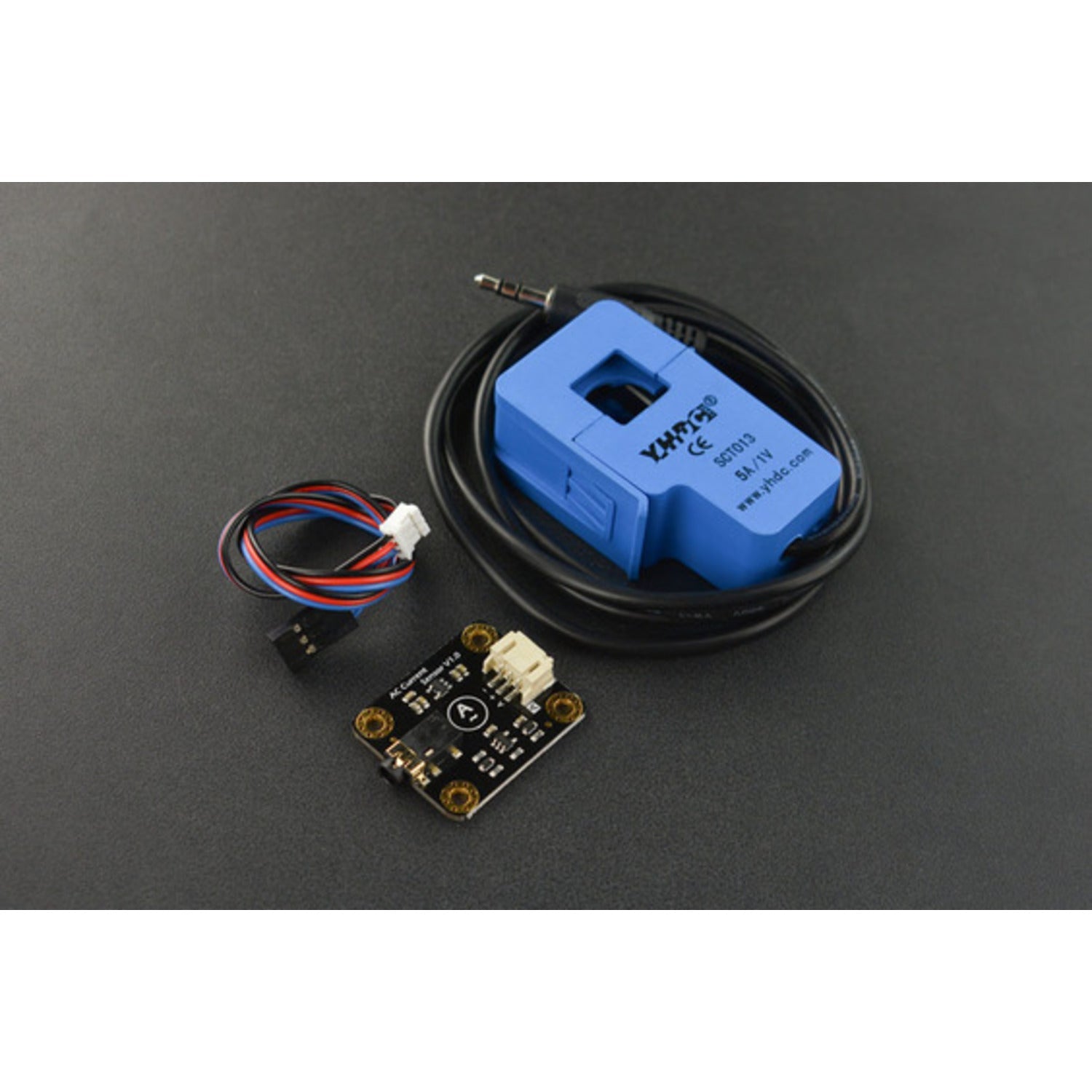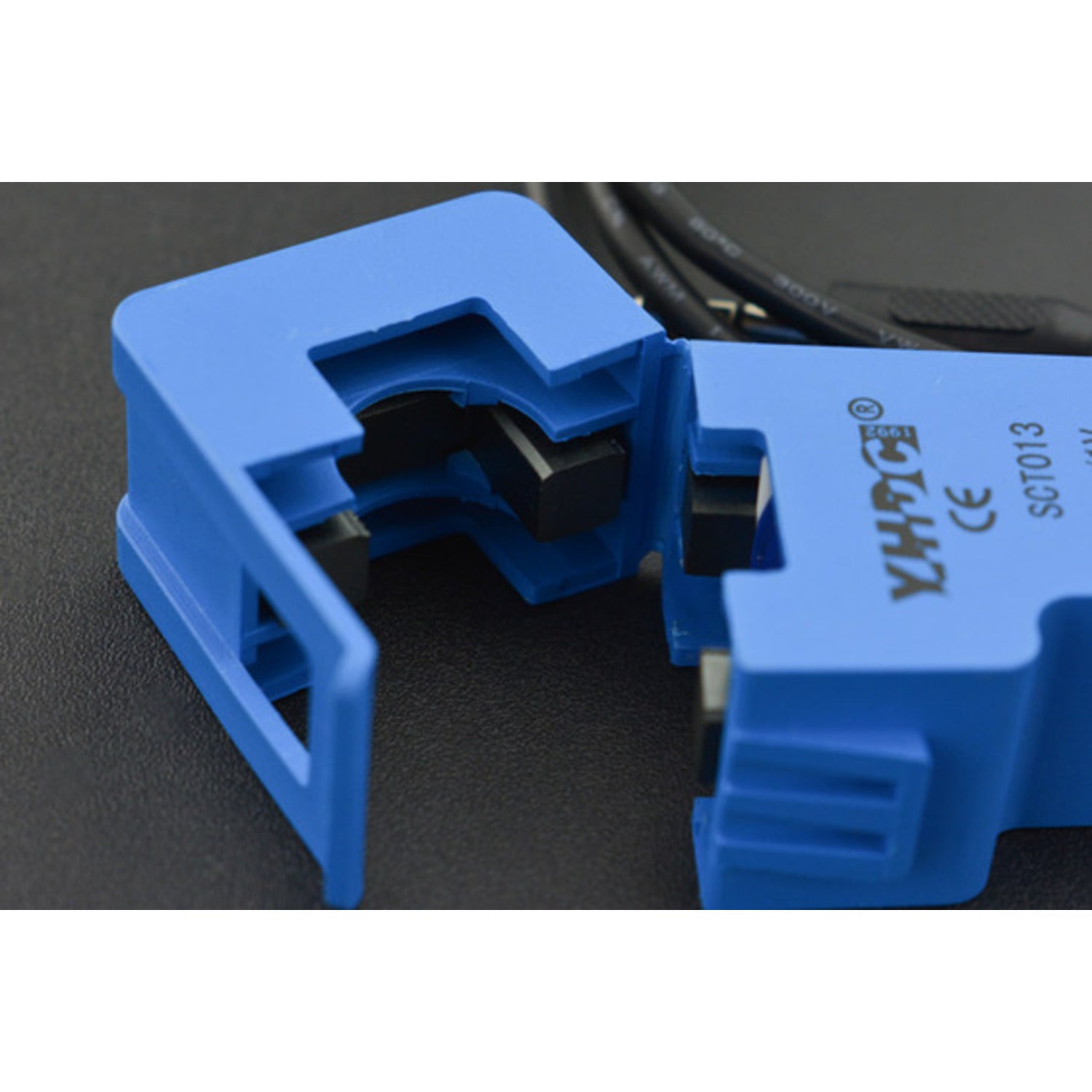Tired of the hassle of cutting wires, wiring, or soldering when measuring AC current? The Gravity Analog AC Current Sensor is here to save the day. With this sensor, you don't need to cut wires or reconnect circuits. Just clamp the AC transformer probe onto the AC line and plug the 3.5mm headphone jack into the signal conversion module. Then, you can easily read the current AC current value. It has an analog output compatible with 3V3/5V micro - controllers, making it perfect for AC current measurement in AC motors, lighting equipment, air compressors, etc.
**Key Features**:
- Non - contact measurement for high safety.
- Multiple ranges to suit various measurement scenarios.
- Compatibility with 3V3/5V micro - controllers.
**Applications**:
- Automatic monitoring of AC motors.
- Measurement of lighting and electrical equipment.
**Specifications**:
**AC Current Signal Conversion Module**:
- Input Voltage (VCC): 3.3V - 5.5V.
- Interface: Gravity Analog (PH2.0 - 3P, analog voltage output 0.2 - 2.8V DC).
- AC Voltage Input Range: 0 - 1V (AC RMS).
- Relative Error: ±4%.
- Dimension: 32 × 27 mm / 1.26 × 1.06 in.
- Weight: 5 g.
**Open Type AC Transformer Probe**:
- AC Current Range: 0 - 5 A.
- Signal Output (standard Φ3.5mm 3P plug): 0 - 1V AC voltage, linearly corresponding to 0 - 5A.
- Accuracy: ±1%.
- Non - linearity: ≤±0.2%.
- Frequency Range: 50Hz ~ 1kHz.
- Cable Length: 1 m.
- Working Temperature: - 25 ℃ ~ +70 ℃.
- Opening Size: 13 × 13 mm / 0.51 × 0.51 in.
- Weight: 50 g.
**Documents**:
- Product wiki.
- More Documents.




Using the Gravity Analog AC Current Sensor is easy. First, don't worry about cutting any wires. Just take the open - type AC transformer probe and clamp it onto the AC line you want to measure. Next, find the 3.5mm headphone jack on the probe and plug it into the signal conversion module. Once it's connected, you can start reading the AC current value.
When using this sensor, remember to check that the input voltage of the signal conversion module is within the range of 3.3V - 5.5V. Also, make sure the AC voltage input is between 0 - 1V (AC RMS).
For maintenance, keep the sensor clean and dry. Avoid exposing it to extreme temperatures outside the - 25 ℃ to +70 ℃ range. If you're not using it for a long time, store it in a safe place to prevent damage to the probe and the module.